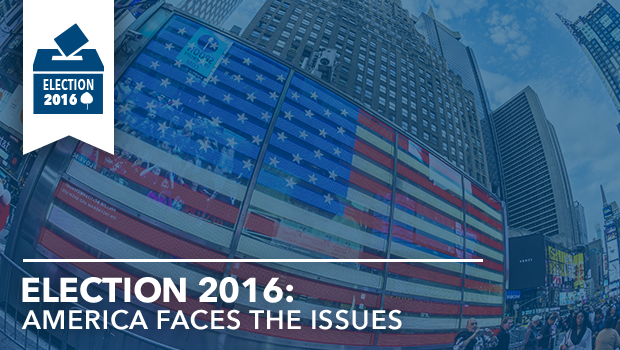The challenges voters face as a result of gerrymandering are inherent in the very definition of the word. According to Merriam-Webster, to gerrymander is “to divide (a state, school district, etc.) into political units that give one group an unfair advantage.” How do our votes count when states have the ability to fine-tune district lines to favor one party over the other? The results of the most recent Census brought about extensive redistricting, with states under Republican control redistricted to favor Republican candidates, and those under Democratic control favoring Democrats. With the geography of our voting landscape being drawn along party lines, where does the “one person, one vote” basis for democracy fit in?
“Redistricting becomes an issue when popular votes are not reflected in Congress,” said retired attorney Parker Maddux during a recent Aspen Community Program discussion on the topic. “The courts have been very reluctant to get involved in trying to resolve the issue, with the exception of the anti-discrimination provisions put in place by the Voting Rights Act of 1965, which prohibited the act of ‘racial gerrymandering.’”
Maddux moderated the final session in a new four-week Aspen Community Program Series called Our Society Reimagined: Exploring New Ideas. The seminar provides an opportunity for Aspen community members to engage in non-partisan discussion and debate regarding the future implications of technology and innovation.
“The question is, do we have the ability to create neutral districts with the use of technology?” Maddux asked. “And if so, do we have the political will to do it?”
Gerrymandering is a time-honored tradition in American politics. The Constitution expressly assigns power to each state to prescribe its own redistricting rules, and proponents would argue that gerrymandering simply reflects the basic human instinct for people to join groups that reflect their own interests and identity. In general, redistricting is important in that it reflects changes that happen over time in any given state’s population. But gerrymandering also has other significant facets that can impact a district:
- Enhances competition among the parties
- Allows a state to group together voters who have common interests
- Leads to the creation of “safe” districts for incumbents
- Holds the states accountable to voters
- Allows minorities to be better represented in Washington
The concern is for “safe districts,” where the incumbent party has an unfavorable advantage.
“Redistricting appears to have as much influence [on election results] as what happens at the ballot box,” said Peter Frey, a professor emeritus from Northwestern University. “It can be a serious violation of the one-person, one-vote principal.” Frey proposed applying the same computer programs and analysis currently used to create “safe” partisan districts and program them to do the exact opposite: create districts with nearly equal number of voters from each party.
“Why not use gerrymandering to achieve a different objective — to create as many competitive districts as possible?” Frey proposed. This approach would address several issues simultaneously:
- Reduce the number of representatives who are permanent fixtures in Washington
- Increase voter participation – when an election appears to be very close, more people vote because their vote might determine who wins.
- Weaken the influence of special interests
- Provide incentive for compromise in Washington
Frey acknowledged that with the potential to have more frequent turnover in Congress, competitive districts may be less stable, but they’d be far more democratic. “Safe districts encapsulate like-minded voters, instead of achieving what’s best for the nation,” he said. “It leads to conflict rather than cooperation. So let’s allow a computer to address the task.”
Frieda Wallison, a retired corporate attorney and chairwoman of the Pitkin County Republicans, questioned whether the issue of redistricting was really just a solution in search of a problem. She outlined traditional guiding principles for redistricting: compactness — districts that hang together in a geometric way; contiguity — districts that are connected geographically; and communities of interest — districts drawn with respect to political subdivisions or communities defined by actual shared interests. She added that a fourth criterion should be considered, too: boundaries. Districts should typically stay within municipal and county boundaries, though that’s not always the case, she noted.
Wallison argued that the gap in percentage points between the popular vote and the Electoral College is not significant enough to signal a problem. Furthermore, Wallison contended, even states that appear to use competitiveness as one of their redistricting criterion lack any real competition. For example, despite Oregon’s attempt to create more competitive districting, four out of five seats in the House of Representatives are occupied by Democrats. In 2014, Democratic candidates in Oregon received 56 percent of the vote, but hold 80 percent of the seats. “There are drawbacks to looking at competitiveness as the critical factor,” Wallison said. “It leads to nasty politics and the electorate is no wiser.”
Wallison was also wary of using technology to draw district lines.
“It seems like a very static approach for a very dynamic process — so many things change over the course of a decade [between the Census and redistricting],” she said. “I get worried about something that’s locked in for that long.”
Some participants said the system should be left alone because it’s beneficial to minorities who otherwise wouldn’t be represented. Others argued that the problem is with the limitations of a two-party system. Still, other participants said the Constitution was constructed to cause this kind of gridlock — that was the Founding Fathers’ intent, to create a system infused with checks and balances.
The general consensus was marked by a tone of despondency and disdain for a system so inherently complex that a simple solution might not be feasible. “People feel disempowered,” said participant Ginni Galicano. “They feel that their voices don’t count. It’s been the same way for decades. There’s something deeply wrong with this system.”
Our Society Reimagined: Exploring New Ideas is part of the new four-week Aspen Community Program Series. It is designed as a forum for community members to gain insight into specific issues facing our society today, as well as research viable solutions to these issues. Visit our event calendar to learn more.


